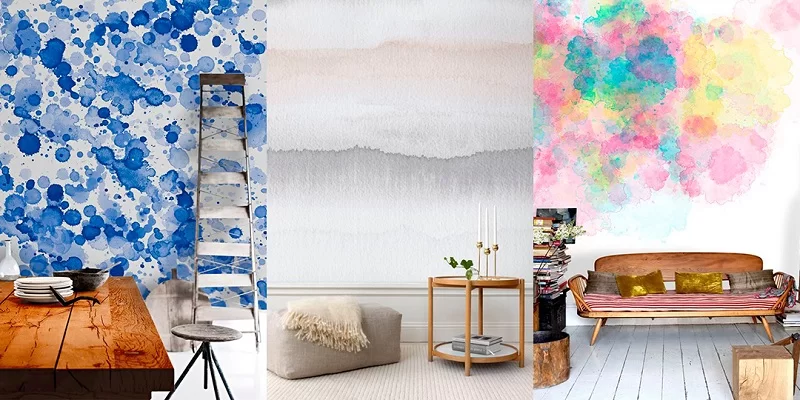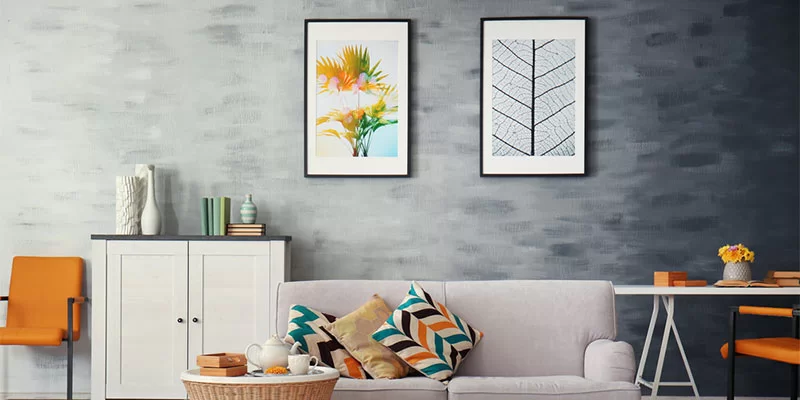
Compare acrylic paint and emulsion
Water-based paints are considered the most popular in repair and construction work, regardless of whether we are talking about home repairs or the work of professionals. There are many varieties of water emulsion, among which acrylic stands out for its versatility. Does it have features and how does it differ from water emulsion? Our experts know the answer.
Features and benefits of water-based paints

Water-based paints are a fairly new type of coloring compositions, which began to be actively used in repair and construction work only in the 20th century. The structure of the product is quite simple, but at the same time it fulfills its role perfectly. The water emulsion contains an insoluble color pigment, ordinary water and binder polymers (acrylic or silicone resin is allowed). In some cases, other components are added to change the basic properties or enhance them. To change the consistency of the composition, as a rule, solvents are used.
Water-based emulsions are used for finishing various surfaces, but only those that are located indoors, that is, the composition in question is suitable only for interior work.
The main advantages of water-based paints:
-
Environmental friendliness — does not contain and does not emit toxic substances when applied, therefore it is absolutely safe; -
Ease of use — to work with water-based paint, no special skills are required — it is easily applied both with a roller and with a regular brush; -
No unpleasant odor — we are talking about the absence of a pungent odor after complete drying; -
Possibility to change the original color — by adding a special pigment to the water emulsion, you can achieve a change in the original shade; -
Affordable price — water emulsion is relatively inexpensive, and due to the ease of application does not require the participation of a professional, this product can be considered very profitable in terms of economy.
Among the disadvantages of water emulsion it may be noted the impossibility of using some of its subspecies in rooms with high humidity, as well as for processing metal surfaces.
ON A NOTE. Due to their textural and structural features, water-based paints perfectly fill small cracks and chips, therefore, when using such a coloring composition, preliminary preparation of a rough coating is not necessary.
There are several types of water-based paints: mineral, silicate, acrylic and silicone. Each of them differs not only in composition, but also in the applied field. Mineral is considered the most inexpensive: it is based on slaked lime or cement. Suitable for processing various surfaces, but does not differ in durability.
Silicate contains liquid glass in its composition and is used for rooms with high humidity. Acrylic is considered a universal option, as it is perfect for treating surfaces made of glass, metal, wood, concrete, brick and applying to plaster. Well, and, finally, silicone — the most expensive option from the existing water-based paints. Contains high quality silicone resins. Suitable for absolutely any surface.
Features and benefits of acrylic paints

Acrylic-based paints contain polymer emulsion, dyes and distilled water. Almost immediately after application, due to copolymers and polyacrylics, the coloring composition forms a protective film on the treated surface. Acrylic paints are used to process the ceiling and walls, often serve as an original decor and even a working material when writing art paintings. The coloring composition based on acrylic resin allows you to create a durable and at the same time elastic layer with good pigment.
Acrylic paint has many advantages:
-
High quality — thanks to the unique composition and good pigments, acrylic paint has a rich, beautiful color that provides a luxurious appearance to the treated surface. In addition, it retains its properties and rich color for a long time. -
Fast drying — the surface treated with acrylic paint dries very quickly — it partially hardens in half an hour, while the layer completely sets within a few days. The higher the natural air temperature in the room, the faster the applied coating will dry. -
Versatility — the composition in question can be used not only in the process of repair work, but also for the original decor. -
The presence of a protective film — immediately after painting the surface with an acrylic-based composition, a protective film is formed that prevents cracking and rolling of the coating (the film is not afraid of ultraviolet radiation, high temperatures and humidity). -
Environmental friendliness — acrylic composition is non-toxic, therefore it is perfect for indoor surface treatment. -
Ease of use — no special skills are required to work with paint — it is very easy and quick to apply, it does not have a pungent odor, which is very convenient, because the room will not need long ventilation. -
fire safety — all components are resistant to fire, so acrylic paint is absolutely fireproof. -
Variety of shades — the product can be used in absolutely any interior due to the incredible richness of colors. -
Affordable Price — Since acrylic paint is relatively inexpensive and due to its ease of application it does not require the presence of a professional, this product can be considered very beneficial in terms of economy.
Despite the impressive set of positive characteristics, there are acrylic paints and steam are not enoughin:
-
Not suitable for rooms with high humidity;
-
Application to plaster is possible only after a long time after its formation.
How to properly apply the composition to the surface?

It should immediately be clarified that the technology for applying the products in question is identical, so the scheme below can be safely used to work with both acrylic and water-based paints. First you need to clarify for which surfaces both finishing compositions are suitable. They can be used to treat surfaces made of concrete, glass, wood, metal, brick and even paper. Our experts recommend doing the work according to the following scheme:
-
Calculate the required amount of the product (if there are decorative elements on the surface, add 15% to the figure obtained);
-
Choose the right paint, taking into account its composition and properties — be sure to carefully study the instructions that came with the product;
-
Prepare the work surface — remove the old coating, thoroughly clean the rough surface from dirt and debris, fill them if there are cracks;
-
Clean the surface with sandpaper, remove all dust with a damp cloth, apply a primer, wait for it to dry completely;
-
Prepare working tools (roller, brush, cuvette) and paint over hard-to-reach areas with a brush;
-
Apply to the surface with a roller, after dipping it into a cuvette with a coloring composition;
-
The second layer can be applied already 4 hours after the first one.
Immediately after completion of work, be sure to thoroughly wash all tools so that they remain in a “working” condition in the future.
About «hybrids»
There are several varieties of acrylic-based water-based paints, and each has its own purpose:
-
Facade — used for processing the outer surfaces of the building (they can have both a relief and a smooth texture);
-
Atmospheric — like the first variety, are designed to work with outdoor surfaces due to their resistance to moisture and temperature extremes;
-
Washable — used to treat surfaces that are often dirty (relevant for rooms such as a bathroom or kitchen);
-
For interior work — suitable for processing any surfaces indoors (the most resistant type of paint to mechanical stress).
ON A NOTE. Inexperienced consumers often have a question about the possibility of combining acrylic and water-based paints (that is, first the first layer is applied with one composition, then the second with another). This option is perfectly acceptable. The main thing is to do it right: first apply a water-based emulsion and let it harden well, then apply an acrylic composition.
Comparative characteristics
Traditionally and scrupulously, we summarize everything described above. So, what are the key differences between water-based and acrylic paints? Our experts have compiled a detailed description.
|
|
|
|
|
Main component
|
cement/glass/silicone resin
|
acrylic resin
|
|
Moisture resistance
|
Used for finishing surfaces in rooms with high humidity
|
Not suitable for surface finishing in rooms with high humidity
|
|
Outdoor applications
|
Doesn’t fit
|
Fits
|
|
Temperature and chemical resistance
|
Medium
|
high
|
|
Durability
|
Short service life
|
Long service life
|
|
Drying speed
|
Dries quickly (sets within 4 hours)
|
Dries quickly (sets within 4 hours)
|

Добавить комментарий
Для отправки комментария вам необходимо авторизоваться.